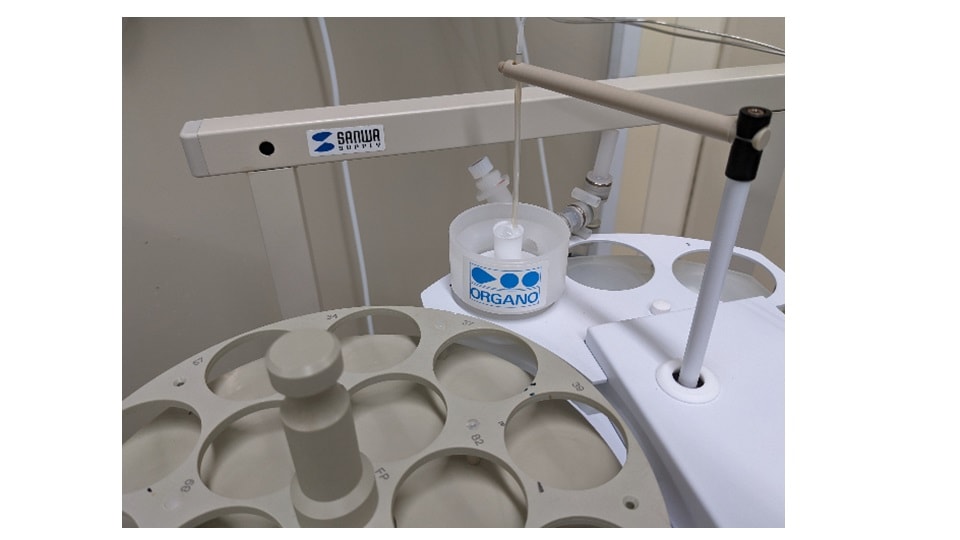Ultrapure water (UPW) with a resistivity of >18 MΩ-cm is one of the most critical semiconductor process chemicals as it is in direct contact with the wafer surface at many stages of manufacturing. As impurities in the water can affect the performance and reliability of final electronic devices, multiple elements must be monitored in UPW at the ppt (1 x 10-9 g/kg) or sub-ppt level.
ASTM and SEMI standard guides for UPW require detection limits (DLs) of less than 0.5 ppt and background equivalent concentrations (BECs) less than 1 ppt for many elements apart from boron (B). To reflect the challenge of controlling the background levels of B in UPW, the standards set higher respective limits of 15 and 50 ppt.
Also, measuring B below 1 ppt is challenging by ICP-MS due to its high abundance in the environment, suppressed ionization efficiency, and memory effects.
As B backgrounds are highly dependent on water quality, the Organo Puric ω Ⅱ UPW production system is equipped with a filter for B removal. To test the effectiveness of the system, UPW was analyzed using an Agilent 8900 Semiconductor Configuration ICP-QQQ. The instrument was fitted with a quartz nebulizer (G1820-65138) and sample introduction was facilitated using an Agilent I-AS autosampler.
Figure 1 shows the Organo flowing rinse port connected to the I-AS autosampler. The rinse port is only available for Agilent ICP-MS instruments.

Multi-element impurity analysis of UPW
The Agilent ICP-MS MassHunter software automatically calculated the LODs and BECs as 3-sigma of the standard deviation of 10 replicates of the bottled Puric ω II UPW blank (Table 1).
The LODs and BECs of most elements—including B—ranged from 1 ppq to 0.63 ppt, confirming the exceptional sensitivity and interference removal capabilities of the ICP-MS/MS method.

Checking the effectiveness of the boron filter
The 8900 ICP-QQQ method was also used to acquire B data for UPW produced using an Organo Puric ω system with no boron filter.
Comparing the LODs and BECs attained using both systems (Figure 2) shows an improvement of around 50% or better in both results when a boron filter was used. The filter of the Puric ω II reduced the LOD of B from 0.51 to 0.12 ppt and lowered the BEC from 1.2 to 0.63 ppt.

Releasing the detection power of the 8900 ICP-QQQ
Low-mass, difficult to ionize, and a ubiquitous contaminant, boron can prove challenging even in the cleanest ultrapure water. The ultraclean sample introduction system, high sensitivity and ionization efficiency of the 8900 combined with the Organo Puric ω system with the additional boron filter reduces background contamination, releasing the impressive detection limit and background performance of the 8900 ICP-QQQ.
Read more here:
Ultratrace Impurity Analysis of Ultrapure Water with Low Boron Background by ICP-MS
